Amorphophallus bulbifer growth in a four day span from June 26th to June 30th.
We moved back into our Seattle house for the month of June. One of the first things we did is check on our outside Amorphophallus bulbifer. The location is described in these posts: 2009: Growing Amorphophallus bulbifer in the Pacific Northwest – Outdoors and 2012: Rise of the Amorphophallus.
This year's schedule for our A. bulbifer is something like this: through the first half of June, nothing is visible. We worry that we had lost them. Then by mid June, the first leaves start to poke up. By June 30, the biggest plant is almost 2 feet tall, from ground to tip of unfurled leaf. They survived! Looking back at our past notes, this growth pattern is pretty typical.
We dressed the area around the plants with another layer of hazelnut shells, our go-to ground cover, and left them alone. They survive with no watering other than what comes from the sky.
We have two groups of A. bulbifer. One group (group 1 in the photos) is more exposed to the elements and seems to exhibit slower development. Exposed here means more rainwater and open sky. The other group (group 2) is under an overhang of the house and gets less rainwater and open sky. It would be great to measure leaf sizes when both groups are leafed out and see if there is a plant size difference.
Both groups have about a dozen or more plants. We assume the leaves fall over in the Fall and drop their bulbils to give rise to new plants. (The smaller plants are further out away from the house as the leaves would lean that way?) Unfortunately, as the house is rented, we haven't been around to see this new-plant-creation in action, but it must be the case because there are more plants than we originally had.
One of the clumps has a Arisaema consanguineum mixed in that is easy to tell apart from A. bulbifer when all the plants are leafed out. We don't see the A. consaguineum in these photos and wonder if it died or was "weeded out" by a gardening crew that we had come through. From our past notes, the A. consanguineum comes up a full month to 2 months earlier and it should be visible and it isn't.
Until next time A. bulbifer, stay well and avoid the errant gardeners.
June 24th. Left group 1 and right group 2.

June 26th. Left group 1 and right group 2.
June 28th. Left group 1, center group 2, right group 2 from inside house.
June 29th. Left group 1 and right group 2.


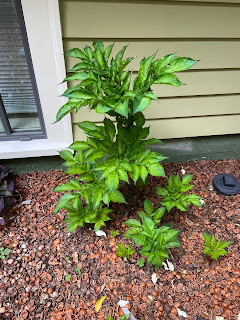


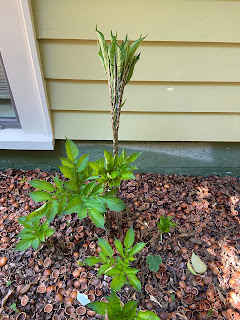


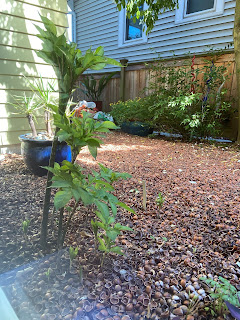
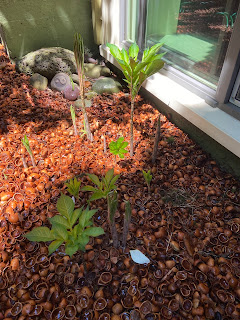
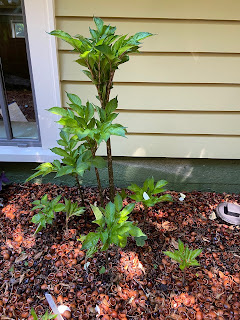



No comments:
Post a Comment
All comments go through a moderation process. Even though it may not look like the comment was accepted, it probably was. Check back in a day if you asked a question. Thanks!